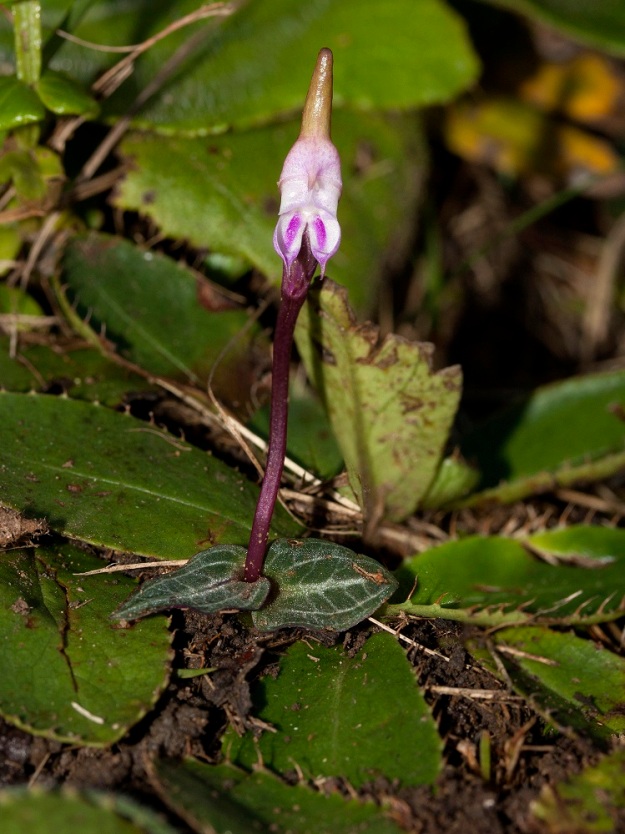ORCHIDACEAE: Disperis woodii [Declining]
Disperis woodii commonly known as Wood’s Disperis was named after John Medley Wood (1827 – 1915), a botanist and collector who became the first curator of the Natal Herbarium. Many people will know him through his numerous publication on KZN flora. The exquisite orchid is a declining species, which is under threat from urban development and sugarcane cultivation.
Disperis woodii is found in the damp, sandy grasslands of KZN and the Eastern Cape, growing to heights of between 40 – 150mm. Disperis woodii contains two leaves that are alternate, sharply pointed, dark green with silvery veins, egg-shaped with the wider part below the middle and are situated at the base or on the stem.
Flowers are solitary, whitish or pink, in the axil of a small bract on a red stalk. Median sepal are egg-shaped with an upright, tubular spur (a slender hollow extension of the perianth, often containing nectar), 10 – 15mm long and dark yellow-green. Lateral sepals are broadest at the middle with two equal rounded ends, gradually narrowing to a long tip, however, the spurs are not pointed and are 4 – 6mm long, marked with a longitudinal pink streak. The petals are attached to the median sepal, curved like a sickle and divided into two unequal parts. They are long and rounded in outline, gradually narrowing to a long tip of 5 mm long and 3 mm wide. The ovary of Disperis woodii is egg-shaped and about 4 mm long.
Disperis woodii can be seen flowering between March and August.
Please report sightings of these naturally occurring plants to Suvarna Parbhoo, CREW programme: KZN Node Manager s.parbhoo@sanbi.org.za
References:
- Kurzweil, H. & Victor, J.E. 2005. Disperis woodii Bolus. National Assessment: Red List of South African Plants version 2014.1. Accessed on 2015/06/04
- Linder, H.P. & Kurzweil, H. 1999. Orchids of Southern Africa. A.A. Balkema, Rotterdam.
- Pooley, E. 1998. A field guide to wildflowers KwaZulu-Natal and the Eastern region. Natal Flora Publications Trust, Durban.
